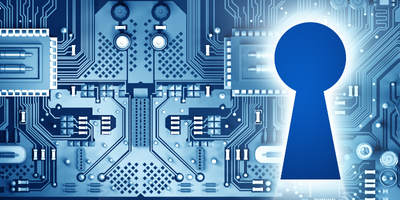Perhaps the most important benefit of RPA is that it renders businesses much less process labor dependent and, consequently, more efficient. Employees may find RPA helpful to remove the minutia out of the repetitive tasks providing more time for critical thinking.
Various surveys have indicated that an increase in productivity and 24/7 availability are the key benefits of RPA. RPA software companies have rapidly increased their client bases and work as companies are rapidly embracing RPA and quickly (less than 6 months) realizing benefits from implementations.
Various surveys from large firms indicate that:
- More than half of the global business leaders embrace robots, and 94% are open to a robotic future.
- One-third of business leaders envision a fast change in terms of automation and plan accordingly.
- Almost half the responders believe that up to a third of their business is automatable.
So what are some of the key risks of RPA technology?
Depending on the type of business, there are various procedures that can be efficiently automated. Some generic processes amenable to automation are regular business procedures like file transferring, order processing, payroll running, etc. All these require that the automation platforms have access to confidential information (inventory lists, credit card numbers, addresses, financial information, passwords, etc.) about the company’s employees, customers, and vendors.
Consequently, the management of security risks is a top-priority issue for the development of RPA. The most ardent problem is to ensure that confidential data is not misused via the privileges attributed to software robots or those that develop the workflows for the robots.
The issue of data security can be broken down into two highly interconnected points one being data security and the other access security. Which is ensuring that the data being accessed and processed by the robot remains confidential and is based on the ‘least privilege’ security principle. Moreover, these robots have elevated permissions to perform tasks and access passwords. Access management of these robots must be properly assigned and reviewed similar to reviewing and managing service accounts.
How to reduce cybersecurity risks in Robotic Process Automation:
- Segregating access to data is not any different than when granting access to normal users, which is based on what the robot should actually do, and not providing domain admin permissions and/or elevated access, unless absolutely necessary.
- Passwords should be maintained in a password vault and service accounts’ access should be reviewed periodically.
- Monitoring the activity of the robots and login information (e.g. monitoring of login information and any errors).
- An RPA environment should be strictly customized via active directory integration, which will increase business efficiency as access management is centralized.
- Encryption of credentials is equally important.
- Performing independent audits and reviews, no different than with any other IT environment.
Overall, RPA lowers security-related efforts associated with training employees and teaching them security practices (e.g. password management, applications of privacy settings) because it ensures a zero-touch environment. By eliminating manual work, automation minimizes security risks at a macro level, if the key controls are implemented at the beginning.
In addition, an automated environment removes biases, variability, and human error. The lack of randomness and variability can increase uniform compliance with company requirements built into the workflows and tasks of the automation.
Besides security risks, the zero-touch environment of RPA also helps mitigate other human-related risks in business operations. An automated environment is free from biases, prejudices, or variability, all of which are human work with the risk of error. Because of this, RPA ensures less risky and consistent work with trustworthy data.
Therefore, RPA should be wisely implemented, which basically amounts to a choice of a stable RPA product or provider, backed by proper, constant monitoring of security measures. Providing role-based access to confidential data, monitoring access, and data encryption are the most salient means to deal with security risks.



